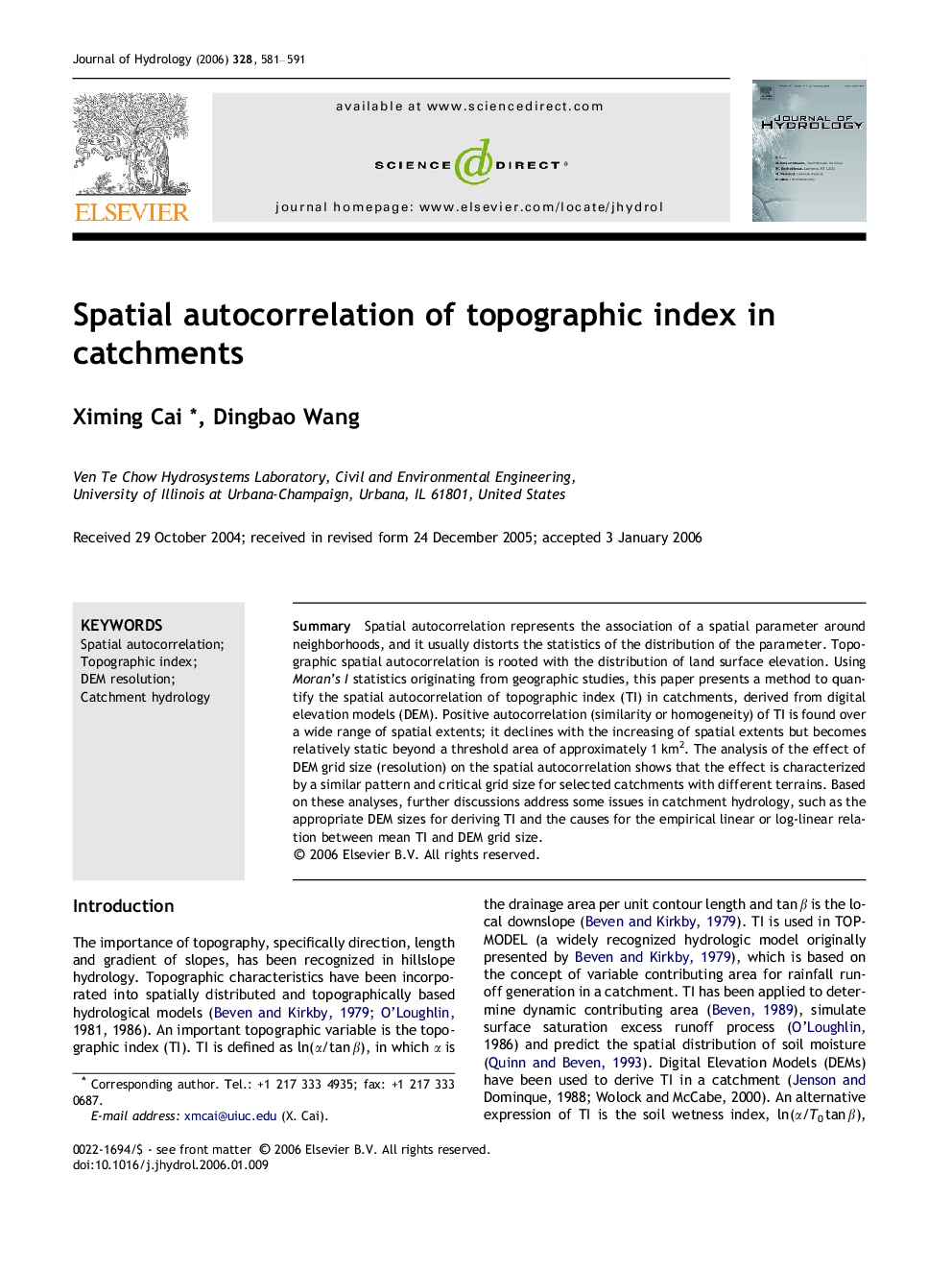| Article ID | Journal | Published Year | Pages | File Type |
|---|---|---|---|---|
| 4580593 | Journal of Hydrology | 2006 | 11 Pages |
SummarySpatial autocorrelation represents the association of a spatial parameter around neighborhoods, and it usually distorts the statistics of the distribution of the parameter. Topographic spatial autocorrelation is rooted with the distribution of land surface elevation. Using Moran’s I statistics originating from geographic studies, this paper presents a method to quantify the spatial autocorrelation of topographic index (TI) in catchments, derived from digital elevation models (DEM). Positive autocorrelation (similarity or homogeneity) of TI is found over a wide range of spatial extents; it declines with the increasing of spatial extents but becomes relatively static beyond a threshold area of approximately 1 km2. The analysis of the effect of DEM grid size (resolution) on the spatial autocorrelation shows that the effect is characterized by a similar pattern and critical grid size for selected catchments with different terrains. Based on these analyses, further discussions address some issues in catchment hydrology, such as the appropriate DEM sizes for deriving TI and the causes for the empirical linear or log-linear relation between mean TI and DEM grid size.
